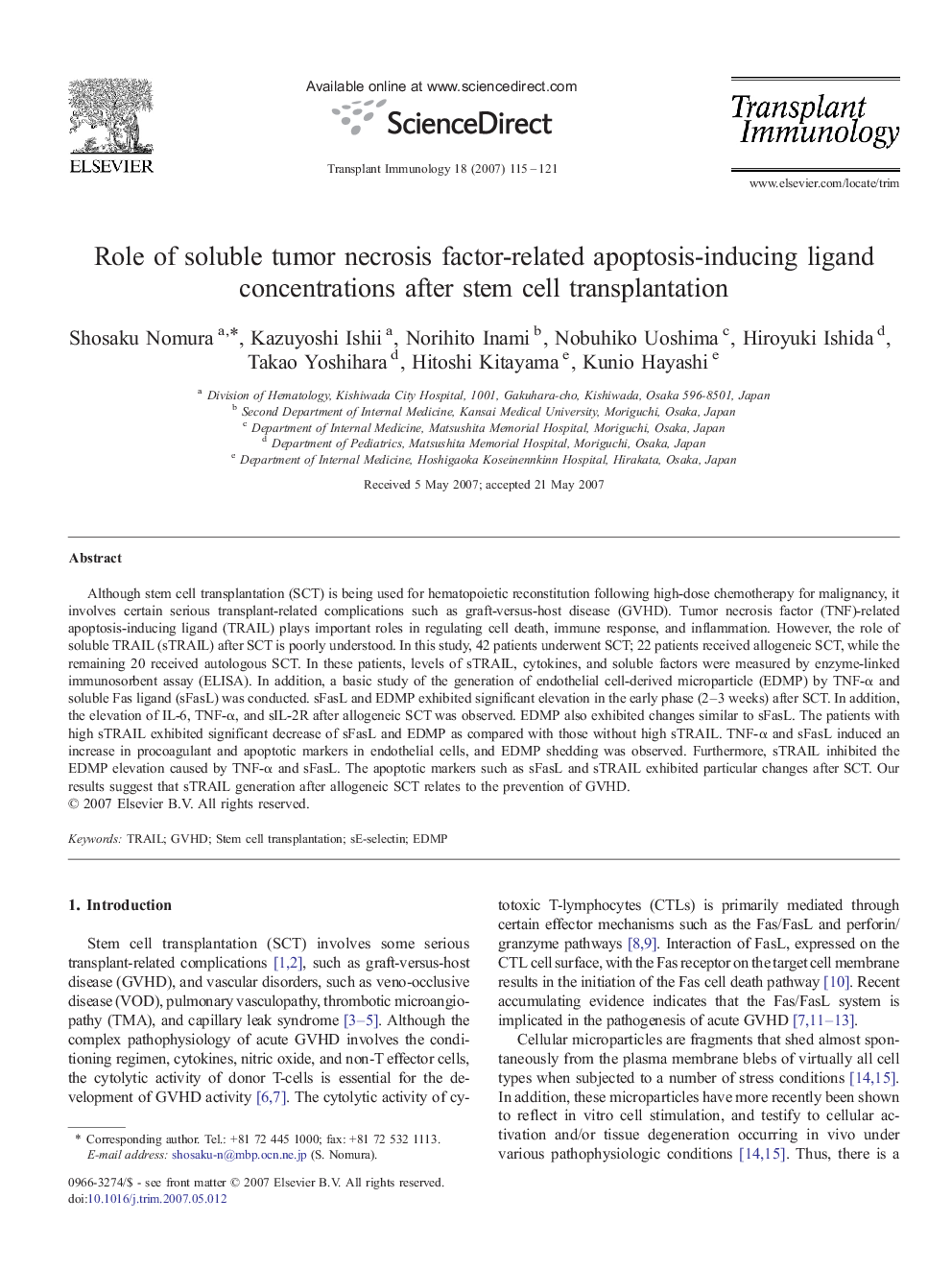| Article ID | Journal | Published Year | Pages | File Type |
|---|---|---|---|---|
| 3392478 | Transplant Immunology | 2007 | 7 Pages |
Although stem cell transplantation (SCT) is being used for hematopoietic reconstitution following high-dose chemotherapy for malignancy, it involves certain serious transplant-related complications such as graft-versus-host disease (GVHD). Tumor necrosis factor (TNF)-related apoptosis-inducing ligand (TRAIL) plays important roles in regulating cell death, immune response, and inflammation. However, the role of soluble TRAIL (sTRAIL) after SCT is poorly understood. In this study, 42 patients underwent SCT; 22 patients received allogeneic SCT, while the remaining 20 received autologous SCT. In these patients, levels of sTRAIL, cytokines, and soluble factors were measured by enzyme-linked immunosorbent assay (ELISA). In addition, a basic study of the generation of endothelial cell-derived microparticle (EDMP) by TNF-α and soluble Fas ligand (sFasL) was conducted. sFasL and EDMP exhibited significant elevation in the early phase (2–3 weeks) after SCT. In addition, the elevation of IL-6, TNF-α, and sIL-2R after allogeneic SCT was observed. EDMP also exhibited changes similar to sFasL. The patients with high sTRAIL exhibited significant decrease of sFasL and EDMP as compared with those without high sTRAIL. TNF-α and sFasL induced an increase in procoagulant and apoptotic markers in endothelial cells, and EDMP shedding was observed. Furthermore, sTRAIL inhibited the EDMP elevation caused by TNF-α and sFasL. The apoptotic markers such as sFasL and sTRAIL exhibited particular changes after SCT. Our results suggest that sTRAIL generation after allogeneic SCT relates to the prevention of GVHD.
